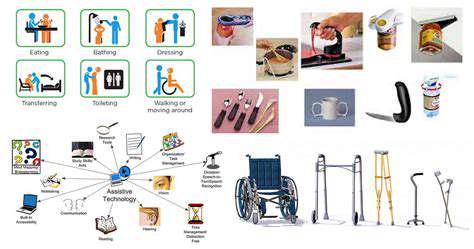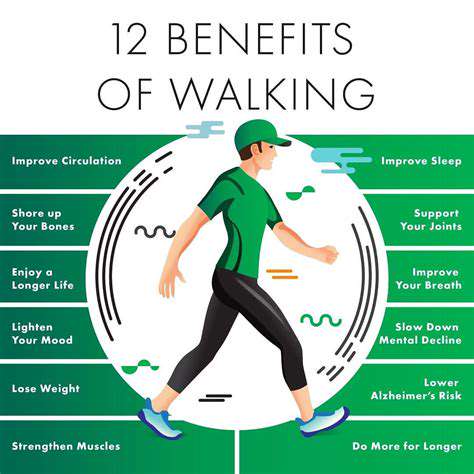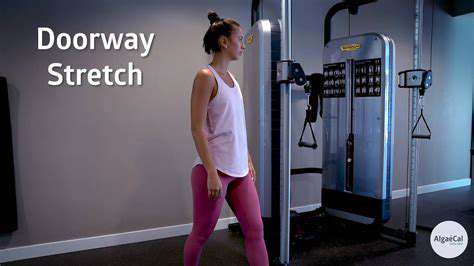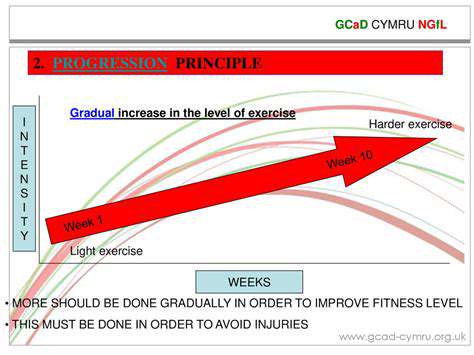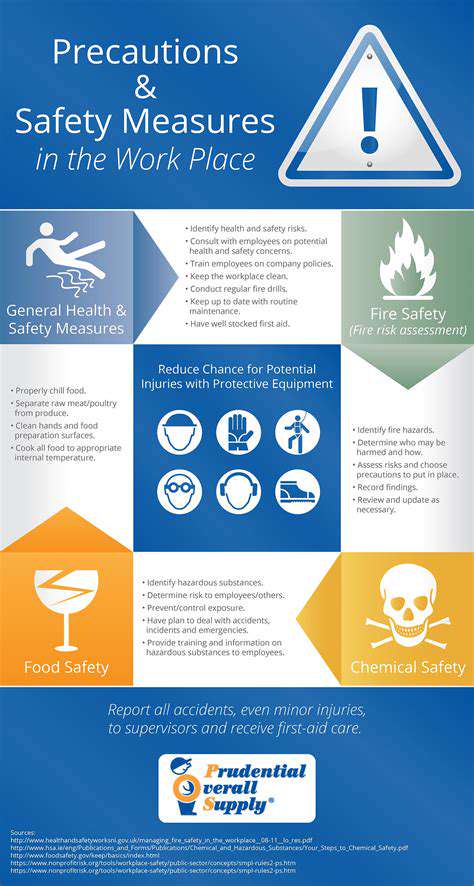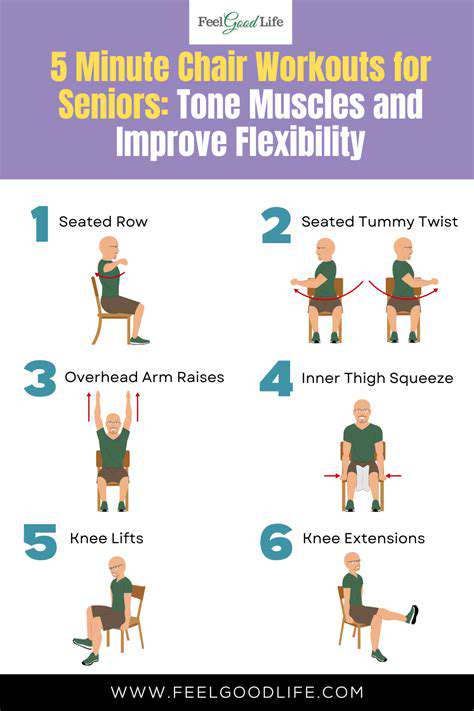Walking to Strengthen Bones in Older Adults
Maintaining healthy bones in older adults goes beyond just diet and exercise. Lifestyle factors, such as smoking cessation and maintaining a healthy weight, play a crucial role. Smoking significantly impairs bone health, increasing the risk of osteoporosis and fractures. Quitting smoking can reverse some of these negative effects, contributing to improved bone density over time. Maintaining a healthy weight also helps to reduce stress on the bones, promoting better bone health.
Adequate sleep and stress management are also important factors for bone health. Chronic stress can negatively impact bone metabolism, leading to bone loss. Prioritizing sufficient sleep and incorporating stress-reducing activities, such as meditation or mindfulness, can contribute to better bone health and overall well-being. By addressing these lifestyle factors, older adults can significantly improve their bone health and reduce the risk of fractures.
Walking: A Low-Impact Exercise for Bone Strengthening
Walking's Impact on Bone Density
Walking, a low-impact exercise, is an excellent way to promote bone health and density. Regular walking helps to stimulate bone remodeling, a natural process where old bone is broken down and new bone is formed. This process is crucial for maintaining strong, healthy bones, especially as we age. The impact of walking on bones is less jarring than high-impact activities like running, making it suitable for people of all ages and fitness levels. This gentle stress on bones encourages the body to build more bone tissue, which is vital for preventing osteoporosis and fractures.
The mechanical stress from walking, combined with the body's natural response to that stress, encourages bone growth and strengthens bone density. This process is more effective when combined with a healthy diet rich in calcium and vitamin D, essential nutrients for bone health. Incorporating walking into your daily routine, even just for short periods, can significantly contribute to better bone health over time. The key is consistency; even a daily 15-minute walk can make a noticeable difference.
Benefits of Walking for Bone Health
One of the significant benefits of walking for bone health is its ability to reduce the risk of osteoporosis. Osteoporosis weakens bones, making them more susceptible to fractures, especially as we age. Walking helps to maintain bone density, thus mitigating this risk. Furthermore, walking is a low-impact exercise, meaning it puts less stress on joints compared to high-impact activities like running, making it a suitable exercise option for people with joint pain or injuries.
Beyond bone density, walking also contributes to overall health and well-being. This activity improves cardiovascular health, helps maintain a healthy weight, and reduces the risk of various chronic diseases. These benefits, coupled with the positive impact on bone health, make walking a highly recommended exercise for individuals seeking to improve their overall physical and mental well-being. Walking can be tailored to individual fitness levels, making it accessible to people of all ages and abilities.
Choosing the Right Walking Routine for Bone Strengthening
To maximize the bone-strengthening effects of walking, consider incorporating specific elements into your routine. A brisk pace, at least 30 minutes most days of the week, provides the necessary stimulus for bone growth. Incorporating hills into your route increases the impact on bones, further stimulating bone remodeling and strengthening. Increasing the duration of your walks gradually is key to avoiding injury and maximizing bone health benefits.
Consider incorporating walking into your daily routine in various ways. Walking to work, taking the stairs instead of the elevator, or going for a walk during your lunch break can all contribute to your daily step count. Listening to music or a podcast, or walking with a friend or family member can make exercise more enjoyable and sustainable. Paying attention to your body and modifying your routine as needed is crucial for avoiding injuries and staying consistent with your exercise plan.
How Walking Strengthens Bones: The Mechanics of Bone Growth
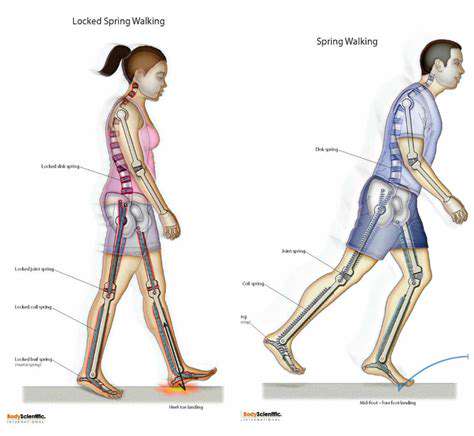
Walking's Impact on Bone Density
Walking, a simple yet effective exercise, plays a crucial role in maintaining and improving bone density. The repetitive impact of each step stimulates bone-forming cells, promoting the growth and strengthening of bone tissue. This process is particularly important for preventing osteoporosis, a condition that weakens bones and increases the risk of fractures.
Regular walking helps to increase bone mineral density (BMD), which is a key indicator of bone strength and health. This increased density makes bones less susceptible to fractures, especially as we age. The benefits are cumulative, meaning that the more you walk, the greater the positive impact on your bone health.
Weight-Bearing Exercise and Bone Health
Walking is a weight-bearing exercise, meaning that it forces your bones to work against gravity. This constant stress stimulates bone cells to produce more bone tissue, leading to a denser and stronger skeletal structure. Weight-bearing exercises are essential for maintaining bone health throughout life.
This process is critical for preventing bone loss, particularly in post-menopausal women. It's important to incorporate weight-bearing activities like walking into your daily routine to support optimal bone health.
The Role of Calcium and Vitamin D
While walking strengthens bones, it's also important to consider the crucial role of calcium and vitamin D in bone health. Calcium is the primary building block of bones, while vitamin D helps your body absorb calcium effectively. A balanced diet rich in calcium-rich foods like dairy products, leafy greens, and fortified foods is essential for bone health.
Sufficient vitamin D is also crucial for optimal calcium absorption. Sunlight exposure is a natural way to obtain vitamin D, but supplements might be necessary for some individuals, especially those who spend limited time outdoors. Consult your doctor for personalized recommendations.
Walking Pace and Duration for Maximum Benefit
Walking at a brisk pace for a longer duration can provide more significant benefits to bone health. The intensity of the exercise plays a vital role in stimulating bone formation. A faster pace, coupled with a longer duration, can lead to a more pronounced improvement in bone density. The key is to find a pace that's challenging but sustainable over time.
Aim for at least 30 minutes of brisk walking most days of the week. Gradually increasing the duration and intensity of your walks can further enhance the impact on bone health. Listen to your body and adjust your pace as needed.
Walking and Overall Health
The benefits of walking extend beyond bone health; it's a fantastic exercise for overall well-being. Regular walking promotes cardiovascular health, improves mood, and helps maintain a healthy weight. This combination of physical and mental benefits makes walking a truly comprehensive exercise.
Incorporating walking into a regular routine can significantly reduce the risk of chronic diseases, including heart disease, type 2 diabetes, and certain types of cancer. Walking is a low-impact exercise, making it suitable for individuals of all ages and fitness levels.
Walking and Bone Health in Different Age Groups
Walking is crucial for maintaining bone health at every stage of life, but its importance differs slightly depending on the age group. Children and adolescents need walking to build strong bones during their growth years, while adults need it to maintain the bone density they've already built. Older adults may need to focus on maintaining balance and strength while walking to minimize the risk of falls.
For seniors, walking can be particularly helpful in preventing age-related bone loss and falls. It helps maintain muscle strength and balance, reducing the risk of fractures and injuries. Consult with a healthcare professional for personalized recommendations.
Optimizing Your Walking Routine for Bone Health Benefits
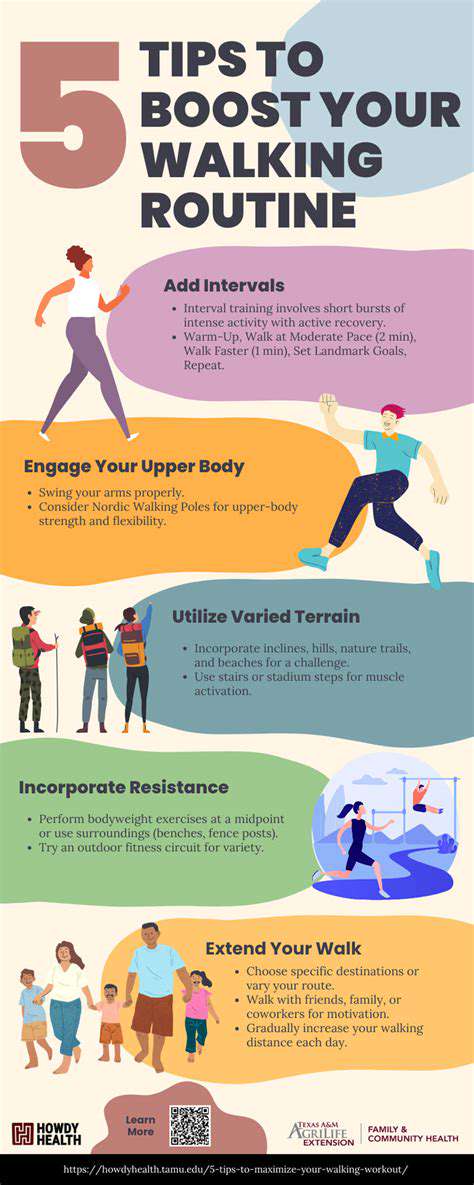
Setting Realistic Goals
Establishing achievable goals is crucial for maintaining motivation and preventing burnout. Start with a manageable walking schedule, gradually increasing the duration and intensity as you progress. Consistency is key; aiming for daily walks, even if it's just for 15-20 minutes, is more effective than sporadic, intense sessions. Consider using a fitness tracker or app to monitor your progress and stay accountable.
Tracking your steps and distance can provide valuable insights into your current activity level and help you set realistic targets for improvement. Don't be afraid to adjust your goals as needed, and celebrate your accomplishments along the way. Small, incremental improvements over time lead to significant results.
Choosing the Right Footwear
Proper footwear is essential for a comfortable and injury-free walking experience. Invest in supportive shoes designed specifically for walking, with good arch support and cushioning. This will help to prevent foot pain and discomfort, allowing you to walk longer and more comfortably. Look for shoes that fit well and provide adequate ankle stability. Checking for proper fit, including room for your toes, is important to avoid blisters and other foot problems.
Consider the terrain you'll be walking on when selecting your footwear. Different surfaces require different types of shoes. For example, shoes designed for paved surfaces might not be ideal for uneven trails. Wearing the correct shoes for the specific environment you'll be walking in can significantly reduce the risk of injury.
Incorporating Variety into Your Walks
To prevent boredom and maintain motivation, mix up your walking routes and routines. Explore different parks, trails, or neighborhoods. Changing your scenery can make your walks more enjoyable and engaging. Try incorporating hills or inclines into your route to challenge yourself and strengthen your leg muscles. Varying your pace and incorporating intervals of faster walking can enhance calorie burning and cardiovascular fitness.
Warm-up and Cool-down Stretches
Prior to your walk, perform a brief warm-up routine to prepare your muscles for activity. Light cardio, such as arm circles and leg swings, will increase blood flow and flexibility. This is particularly important for preventing injuries and maximizing your workout. After your walk, cool down with gentle stretches to help your muscles recover and reduce soreness. Hold each stretch for 15-30 seconds, focusing on major muscle groups used during your walk.
Listening to Your Body
Pay close attention to your body's signals during your walk. Rest when you feel tired or experience pain. Listen to your body's signals and don't push yourself too hard, especially when starting a new routine. Ignoring pain or discomfort can lead to injuries that may require time off from your exercise routine. Adjust your pace, distance, or intensity as needed to maintain a comfortable level of exertion. Hydration is vital; carry a water bottle and drink regularly throughout your walk.
Nutrition and Hydration
Proper nutrition and hydration are essential for supporting your walking routine and overall well-being. Fuel your body with nutritious foods that provide sustained energy. Eating a balanced diet, rich in fruits, vegetables, and lean proteins, will help you stay energized and perform at your best. Staying hydrated is crucial for maintaining optimal physical function and preventing fatigue. Carry a water bottle and drink water regularly, especially during and after your walk.
Monitoring Your Progress and Adjusting as Needed
Regularly monitor your progress and make adjustments to your walking routine as needed. Track your distance, time, and pace to identify areas for improvement. Consider consulting with a healthcare professional or certified personal trainer to develop a personalized walking plan that aligns with your specific needs and fitness level. This tailored approach will help you achieve your goals while minimizing the risk of injury. Tracking your progress will keep you motivated and focused on your fitness journey.
